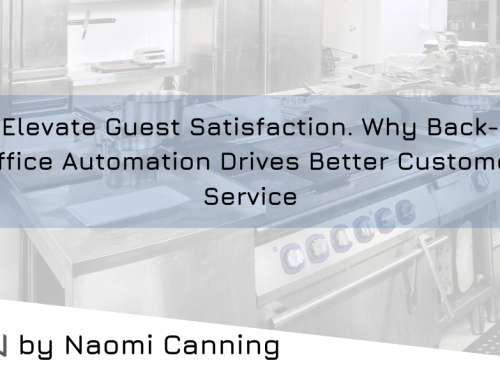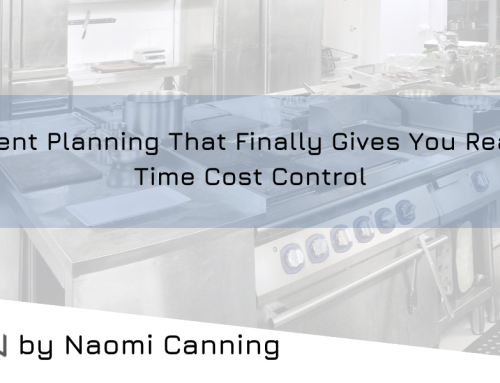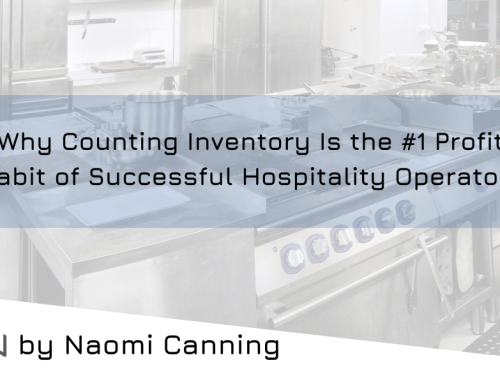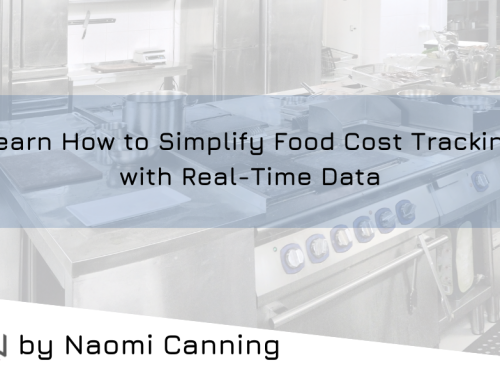Running a restaurant is never easy, especially when mounting costs get in the way of your culinary dreams. Did you know that food waste alone costs the global economy nearly $100 billion annually? This blog aims to unpack effective strategies for cost control within your restaurant — from inventory management to preventing internal thefts.
Let’s turn those tables and make profit a main course on your menu!
Understanding Cost Control in Restaurants
Cost control in restaurants refers to the practice of managing and reducing expenses to maintain profitability and financial stability.
Definition of cost control
Cost control refers to the consistent practice of identifying and reducing business expenses to increase profits. It involves setting standards, recording actual costs, comparing actual costs with standards, and analyzing any variance to ensure it falls within an acceptable range.
This method often requires careful planning, but its implementation can significantly help avoid overspending in diverse aspects of restaurant operations. With effective cost control strategies in place, restaurants can optimize resources while ensuring that their quality of service remains uncompromised.
Differentiating cost control from other practices
Cost control in the restaurant business focuses on managing and minimizing the expenses. It requires a keen understanding of where your money is going, from food supplies to labor costs.
This practice differs significantly from general budgeting or accounting practices which mostly concern revenue tracking, forecasting income, and managing cash flow.
Budgeting helps an organization plan its future expenditures based on expected revenues while cost control ensures these planned expenditures aren’t exceeded without justification.
In comparison, accounting records and documents all financial activities but doesn’t necessarily limit spending like cost control does. Strategic use of accounts payable software can assist in identifying areas for cost reduction and optimizing workflow process efficiency as a part of effective cost controls.
Thus, it’s crucial to understand that while all these practices aim at improving financial health, they each serve unique roles within the organization.
Importance of Restaurant Food Cost Control
Calculating the overall food cost percentage and ideal food cost percentage are essential in understanding the importance of restaurant food cost control.
Calculation of overall food cost percentage
Gaining an understanding of how to calculate your restaurant’s overall food cost percentage allows you to keep a keen eye on expenditures. Here’s how to do it:
- First, you need to determine the cost of the food used in a given period. This includes all ingredients used in meals during this time.
- Next, find out your restaurant’s total food sales for that same period.
- Then, divide your total food costs by your total food sales.
- Multiply the resulting number by 100 to get your overall food cost percentage.
Calculation of ideal food cost percentage
Calculating the ideal food cost percentage is crucial for effective restaurant cost control. Here are the steps to calculate it:
- Determine the total cost of all food purchases during a specific period.
- Calculate the total revenue generated from food sales during the same period.
- Divide the food cost by the food sales and multiply by 100 to get the food cost percentage.
- Compare the calculated percentage with industry benchmarks to assess if your restaurant’s costs are within a desirable range.
- Adjust your menu pricing or review your inventory management practices if necessary to maintain an ideal food cost percentage.
Effective Strategies for Restaurant Cost Control
Tracking and managing inventory, purchasing raw materials on credit, analyzing stock requirements through yield management, controlling wastage through portion control, and reducing employee turnover to control labor costs.
Tracking and managing inventory
Tracking and managing inventory is an essential strategy for controlling costs in your restaurant. Here are some effective ways to do it:
- Conduct regular physical counts of your stock to ensure accuracy.
- Utilize inventory management software to track and monitor inventory levels.
- Implement a first-in, first-out (FIFO) system to prevent spoilage and waste.
- Analyze sales data to forecast demand and adjust your inventory accordingly.
- Establish par levels for each product to avoid overstocking or running out of items.
- Train your staff on proper storage techniques and rotation procedures.
- Build relationships with reliable suppliers who can provide consistent and cost – effective ingredients.
Purchasing raw materials on credit
Purchasing raw materials on credit is an effective strategy for controlling costs in your restaurant. By doing so, you can manage cash flow more efficiently and avoid upfront payments.
This allows you to allocate funds to other essential areas of your business. Additionally, purchasing on credit gives you the flexibility to negotiate better deals and take advantage of bulk discounts from suppliers.
By leveraging this strategy, you can optimize your inventory management while keeping costs under control.
Analyzing stock requirements through yield management
Analyzing stock requirements through yield management is an effective strategy for controlling costs in your restaurant. Here are some steps to follow:
- Monitor inventory levels regularly to identify trends and patterns.
- Use historical data to forecast demand and plan accordingly.
- Optimize procurement processes by identifying the right suppliers and negotiating better deals.
- Implement a just-in-time inventory system to minimize storage costs and reduce waste.
- Train staff on efficient handling of ingredients to prevent spoilage or damage.
Controlling wastage through portion control
Portion control is an effective strategy to reduce wastage in your restaurant. It involves carefully measuring and serving the appropriate amount of food to customers, preventing over-portioning and unnecessary waste. Here are some ways you can implement portion control:
- Use standardized recipes: Create detailed recipes with specific measurements for each ingredient. This ensures consistency in portion sizes across all dishes.
- Train staff on portioning: Provide proper training to your kitchen staff on how to measure and serve correct portions. Emphasize the importance of accuracy to minimize wastage.
- Invest in portioning tools: Use utensils and measuring devices, such as scales or scoops, to ensure accurate portion sizes every time. This helps maintain consistency and reduces the likelihood of excessive portions being served.
- Monitor plate waste: Regularly assess how much food is left uneaten on customers’ plates. This can provide insights into which dishes may need adjustments in portion sizes.
- Offer customizable options: Give customers the choice to customize their meal by offering different portion sizes or side dish options. This allows them to order exactly what they can consume, reducing food waste.
- Analyze customer feedback: Pay attention to customer feedback regarding portion sizes. Adjust portions based on their preferences and suggestions, ensuring minimal wastage while meeting customer satisfaction.
Controlling labor costs by reducing employee turnover
Reducing employee turnover is a key strategy for controlling labor costs in your restaurant. Here are some effective ways to achieve this:
- Implement comprehensive training programs to enhance skills and knowledge.
- Offer competitive wages and benefits to attract and retain talented employees.
- Provide opportunities for growth and advancement within the organization.
- Foster a positive work environment that promotes teamwork and employee satisfaction.
- Conduct regular performance evaluations and provide constructive feedback.
- Offer flexible schedules to accommodate employees’ needs and preferences.
- Recognize and reward outstanding employees through incentives or bonuses.
Implementing Automation for Cost Control
Implement automation to streamline processes and increase efficiency, such as automating manual tasks and utilizing restaurant management software.
Automating manual processes
Automating manual processes can greatly improve cost control in your restaurant. Here are some key areas to consider:
- Streamlining order taking and processing
- Implementing automated inventory tracking and management systems
- Utilizing POS systems for accurate sales and revenue tracking
- Automating payroll calculations and employee scheduling
- Integrating online reservation systems for smoother customer service
Utilizing restaurant management software
Utilizing restaurant management software can be a game-changer when it comes to controlling costs in your establishment. This type of software is designed to streamline various aspects of your operations, such as inventory management, purchasing, and labor scheduling.
By automating these processes, you can save time and reduce errors. With real-time data at your fingertips, you can also make more informed decisions about cost control strategies.
Whether it’s tracking inventory levels or analyzing sales trends, restaurant management software provides valuable insights that can help you optimize your resources for maximum efficiency.
By utilizing this software, you can gain better control over your expenses and identify areas where costs may be slipping through the cracks. It allows you to monitor inventory levels in real-time and generate reports on everything from ingredient usage to waste reduction efforts.
Evaluating Staff Performance and Efficiency
Evaluating staff performance and efficiency is crucial for maintaining cost control in a restaurant.
Importance of staff evaluation
Staff evaluation is crucial for the success of any restaurant. By regularly evaluating the performance and efficiency of your staff, you can identify areas for improvement and provide necessary training or support.
Evaluating staff also helps to ensure that they are meeting established standards and delivering excellent customer service. Additionally, it allows you to recognize top performers and reward them accordingly, which boosts morale and encourages continued excellence among all employees.
Ultimately, staff evaluation contributes to a well-functioning team and enhances the overall dining experience for customers.
Strategies for increasing staff efficiency
Increase staff efficiency in your restaurant with these strategies:
- Provide comprehensive training programs to enhance skills and knowledge.
- Implement clear and efficient communication channels for effective teamwork.
- Optimize scheduling to ensure appropriate staffing levels at all times.
- Utilize technology, such as point-of-sale systems, to streamline tasks.
- Encourage employee feedback and suggestions for process improvements.
- Set clear performance goals and provide regular feedback for motivation.
- Recognize and reward outstanding performance to boost morale.
- Foster a positive work environment that promotes collaboration and productivity.
Controlling Internal Thefts and Pilferage
To prevent internal thefts and pilferage, implement strict inventory control measures and establish clear policies against unauthorized access to valuable items or cash.
Measures to prevent theft and pilferage
Restaurants can take several measures to prevent theft and pilferage. These include:
- Installing a surveillance system with cameras in all key areas of the restaurant.
- Implementing strict access controls, such as secure locks on storage areas and limited access to sensitive information.
- Conducting regular inventory checks to identify any discrepancies or missing items.
- Training employees on the importance of honesty, integrity, and ethical behavior.
- Establishing clear policies and procedures for handling cash, including segregating duties and conducting surprise cash audits.
- Implementing a strong internal control system that includes proper record – keeping and separation of duties.
- Encouraging employees to report any suspicious activities or concerns they may have regarding theft or pilferage.
Daily and Weekly Reporting for Cost Monitoring
Monitoring your restaurant’s costs on a daily and weekly basis is crucial for maintaining financial stability. It allows you to identify any discrepancies or areas of concern quickly.
Learn how regular reporting can help control expenses in your restaurant!
Benefits of regular reporting
Regular reporting is crucial for effective cost control in restaurants. By consistently tracking and analyzing financial data, restaurant owners and managers can gain valuable insights into their business operations.
Regular reports allow them to identify trends, monitor expenses, and make informed decisions about areas where costs can be reduced. This proactive approach helps to minimize financial wastage, improve overall profitability, and ensure the long-term success of the restaurant.
Key metrics to track for cost control
To effectively control costs in your restaurant, it is important to track certain key metrics. By monitoring these metrics, you can identify areas where expenses can be reduced and implement strategies for cost control. Here are some key metrics to track:
- Food Cost Percentage: Calculate your overall food cost percentage by dividing the cost of ingredients by the total food sales. This metric allows you to identify any potential waste or overpricing in your menu items.
- Labor Cost Percentage: Analyze your labor cost percentage by dividing total labor expenses by total sales. This metric helps you assess the efficiency of your staffing and identify opportunities for reducing labor costs.
- Inventory Turnover Rate: Measure how quickly you sell and replace your inventory by calculating the inventory turnover rate. This metric helps you optimize your purchasing and minimize excess stock.
- Average Check Size: Track the average amount customers spend per visit to understand the profitability of each transaction and identify opportunities for upselling or increasing sales.
- Customer Satisfaction Score: Monitor customer satisfaction through surveys or online reviews to ensure that your expenses are providing value and meeting customer expectations.
Managing Quality of Raw Materials
Maintaining high quality standards for raw materials is essential to ensure the best dining experience for your customers. Find out effective strategies to manage and maintain the quality of your restaurant’s raw materials in order to control costs and improve customer satisfaction.
Importance of quality control
Quality control is a vital aspect of managing costs in a restaurant. By ensuring that raw materials and ingredients meet the highest standards, you can prevent waste, minimize customer complaints, and maintain consistency in your dishes.
Conducting regular inspections and quality tests not only guarantee the satisfaction of your customers but also help in preserving the reputation of your establishment. With effective quality control measures in place, you can deliver exceptional dining experiences while keeping costs under control.
Strategies for maintaining quality standards
Maintaining quality standards in your restaurant is crucial for customer satisfaction and business success. Here are some effective strategies to help you ensure high-quality raw materials and ingredients:
- Establish strong supplier relationships: Choose reliable suppliers who consistently provide high-quality products and work closely with them to maintain quality standards.
- Conduct regular inspections: Regularly inspect the quality of raw materials upon delivery to ensure they meet your specifications and standards.
- Implement strict storage guidelines: Store raw materials properly, following appropriate temperature controls, labeling, and rotation techniques to prevent spoilage or contamination.
- Train staff on quality control procedures: Provide comprehensive training to your kitchen staff about proper handling, storage, and preparation techniques to maintain the integrity of the ingredients.
- Monitor food preparation processes: Implement standardized recipes and cooking procedures to ensure consistent quality across all dishes prepared in your restaurant.
- Conduct taste tests and evaluations: Regularly sample menu items to ensure their flavors meet your expectations and match customer preferences.
- Seek feedback from customers: Encourage customers to provide feedback on the quality of their meals so that you can make necessary adjustments or improvements if needed.
- Monitor online reviews and ratings: Pay attention to online reviews and ratings as they can reflect customers’ perception of the overall quality of your restaurant’s food.
- Continuously improve quality control measures: Stay up-to-date with industry trends, best practices, and new technologies that can enhance your ability to maintain high-quality standards.
- Review vendor performance periodically: Evaluate the performance of your suppliers regularly by monitoring their adherence to agreed-upon quality standards and addressing any issues promptly.
Conclusion
In conclusion, implementing effective cost control strategies is essential for the success and profitability of your restaurant. By tracking inventory, controlling portion sizes, reducing employee turnover, utilizing automation technology, and enforcing quality standards, you can significantly reduce costs and increase overall efficiency.
With these strategies in place, you’ll be well on your way to achieving financial stability and long-term success in the competitive restaurant industry. So start implementing these strategies today and watch your profits soar!
FAQs
1. What are the top 5 effective strategies to control costs in my restaurant?
The top 5 effective strategies to control costs in your restaurant include monitoring inventory, optimizing menu pricing, reducing food waste, managing labor costs, and negotiating with suppliers for better deals.
2. How can I effectively monitor inventory in my restaurant?
To effectively monitor inventory in your restaurant, you can implement a strict tracking system using technology such as barcode scanners or digital ordering platforms. Regularly conducting physical inventories and analyzing sales data can also help identify any discrepancies or areas of improvement.
3. What are some ways to reduce food waste in my restaurant?
Some ways to reduce food waste in your restaurant include implementing proper portion control measures, offering customizable options for customers, repurposing leftover ingredients into new dishes or specials, and donating excess food to local charities or organizations.
4. How can I manage labor costs effectively?
To manage labor costs effectively in your restaurant, you can optimize employee scheduling based on demand and peak hours, cross-train staff members to handle multiple tasks efficiently, implement time-tracking systems to avoid unnecessary overtime or idle time, and regularly assess staffing levels based on business needs.





